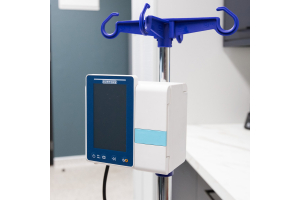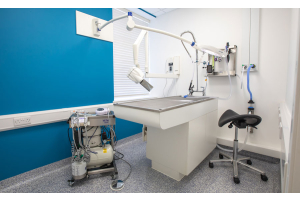
For some time, the limitations of time-capnography have been of concern when training veterinary personnel
As even with a deep understanding of the physics and principles behind capnography, conditions arise that are hidden from the observer.
Traditional time-capnography has some in-built limitations that preclude full awareness of the patients’ conditions. This, coupled with pre-conceived ideas of what the capnogram represents, can result in potentially life-threatening conditions developing.
Two years of development has led to Vetronic Services inventing a directional capnography module, the industry’s first solution to this problem.Directional capnography heralds a new era in patient monitoring and safety. The new technology makes it possible for even junior staff to quickly recognise the appearance and extent of serious ventilation complications, such as excessive dead space, rebreathing due to inadequate gas flow and leaking valves in a circle system.
How capnographs hide certain patient conditions
A common (mis)interpretation of a time-capnogram, is that a rising CO2 level is associated with expiration, and a falling CO2 level is associated with inspiration. There is no relation of the data to inspiration or expiration, so a rising CO2 level can only indicate a rising CO2 level, irrespective of the stage of respiration. It is, therefore, possible that a rising, or high CO2 level could indicate inspiration of previously expired gas rather than normal expiration.
Those experienced in interpretation of capnogram may be able to recognise capnogram traces showing rebreathing from inadequate gas flow or from faulty one-way valves in a circle system.
However, in certain situations, such as when dead space rebreathing exists, the initial inspired gas has the same concentration as the expired end-tidal gas and so there is no change in the level of CO2 on the capnogram trace. Experienced or not, observers of such a capnogram will not be able to identify the extent of even the presence of rebreathing.
How can we fix it?
The solution to this problem is to add directional data to the capnogram so that levels of CO2 can be tied to the specific state of the patient, be that inspiration, expiration or a respiratory pause. This directional capnography is shown via colour coding (colour coded capnography) and can clearly indicate such conditions as rebreathing, inadequate fresh gas flow and periods of respiratory pause, leading to early detection of patient ventilation problems.
Vetronic services has designed and produced this colour coded capnography module with associated directional data indication which clearly and immediately shows the 3 different states of respiration on the capnogram trace. This module will be available to add to Vetronic Lightning monitors
| Improved Safety + | Improved Understanding = | Improved Anaesthesia |
| Quickly identify causes of rising ET CO2 | Phases of breathing clearly defined | Use colour coding to titrate FGF to patient needs |
| Identify failures in fresh gas supply | Clear highlight of deadspace rebreathing | Avoid excessive FGF and so reduce waste of oxygen & volatile agent |
| Quickly identify increased dead space volume | Relate capnogram to patient movements, even with sidestream devices | Identify poorly performing valves in circle circuits |
| Identify poor performanceof circle circuits | Aids teaching | Identify inadequate FGF in non-rebreathing |
| Assess effects of deadspace in e.g HME filters |
Keep an eye out for our upcoming buyers guide series all about capnography
You can view the Vetronic Lighting Multi-Parameter Monitor here










